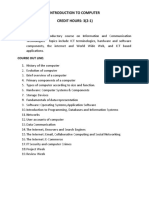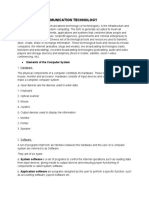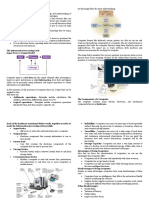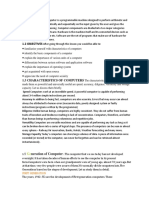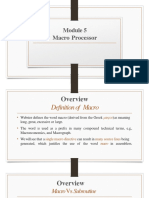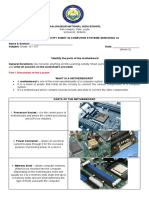0% found this document useful (0 votes)
25 views10 pagesBasic of Computer
The document provides an overview of computers, detailing their functions, components, and classifications. It explains the input-process-output model, characteristics of computers, and the evolution of computer generations from vacuum tubes to modern microprocessors. Additionally, it discusses various types of computers, including desktops, laptops, tablets, servers, mainframes, and supercomputers, as well as the importance of secondary memory for data storage.
Uploaded by
gbhavik330Copyright
© © All Rights Reserved
We take content rights seriously. If you suspect this is your content, claim it here.
Available Formats
Download as DOCX, PDF, TXT or read online on Scribd
0% found this document useful (0 votes)
25 views10 pagesBasic of Computer
The document provides an overview of computers, detailing their functions, components, and classifications. It explains the input-process-output model, characteristics of computers, and the evolution of computer generations from vacuum tubes to modern microprocessors. Additionally, it discusses various types of computers, including desktops, laptops, tablets, servers, mainframes, and supercomputers, as well as the importance of secondary memory for data storage.
Uploaded by
gbhavik330Copyright
© © All Rights Reserved
We take content rights seriously. If you suspect this is your content, claim it here.
Available Formats
Download as DOCX, PDF, TXT or read online on Scribd
/ 10


















